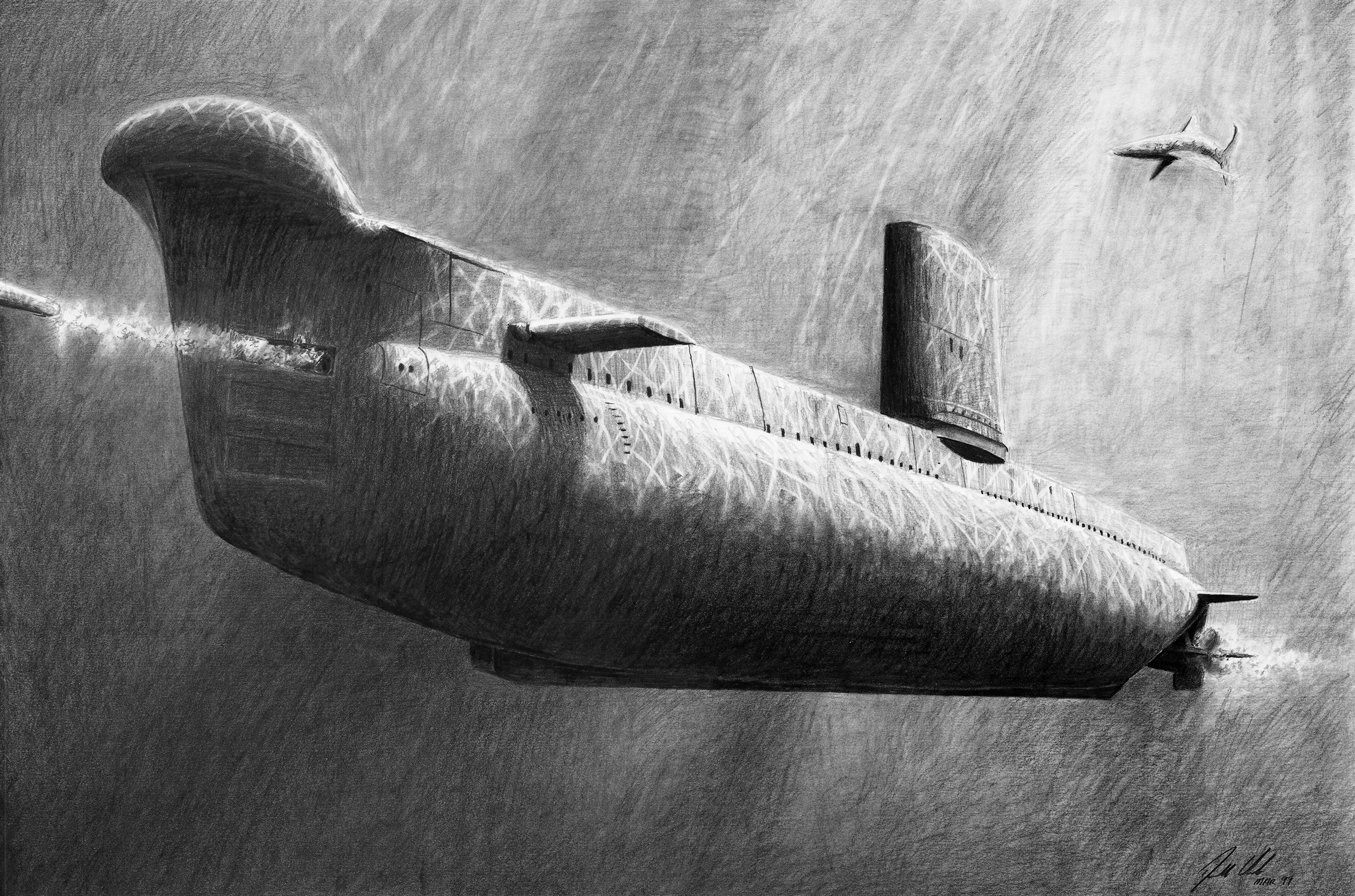Silent Service, Oberon submarine

Darrell White’s graphite pencil drawing of an Oberon class submarine from the Royal Australian Navy captures the submarine underwater firing a torpedo from the port bow tube. This drawing represents an important weapons platform in the Royal Australian Navy – the Oberons gave some 30 years of service before being phased out and replaced by the Collins class.
- About Darrell White
Darrell White was born in Auckland, New Zealand. His family moved to Perth in the mid-1980s, and he left school to join the Royal Australian Navy (RAN) where he became a Signalman. Whilst in the RAN, he regularly photographed ships with the view to one day capturing the scenes in oils. Limited space onboard was not conducive to painting, so Darrell became highly skilled with graphite pencil. Having served seven years, his desire to be a visual creative was the motivation to pursue a new career in Web Design, whilst building up a body of artwork on the side.
David says:
“My art is an eclectic collection, reflecting my multifaceted inspirations and interests. On the one side there is technology with a strong pull towards maritime subjects, with a great influence from growing up in a Naval family and having served in the Royal Australian Navy myself.
On the other side is fantasy work which blends into illustration with some subjects that are appealing to a much younger audience. These two sides usually fight for the opportunity to become a reality on canvas. This has led me to having at least two streams of work on at any one time.
The thread that brings my work together is the desire to reproduce the work in a highly detailed and realistic manner, whether it be graphite pencil or acrylics. I’ve delved into digital art, but I love the tactile interaction with paint and pencil and revel in unplanned mistakes that can create a new style or quality to my work.”
David joined the Australian Society of Marine Artists, and amongst several commissions, was engaged by the West Australian Cricket Association to create a painting of HMAS Sydney (II); as a centre piece for their Commemorative display. The National Maritime Museum of Australia purchased two of his pencil drawings for their collection.
Another side of his work includes a large range of illustrations for the Western Australian Department of Environment and Conservation. These adorn promotional material, activity books for kids, signage and even playground equipment.
Darrell now resides in Wellington and continues to produce works for Australasian clients.
- About Oberon Class Submarines
The Oberon Class Submarines were the fourth class of submarines to be operated by the RAN since its formation in 1911. A decision was made in 1963 to acquire four Oberon-class submarines. A later decision added two more to the Squadron. They were built by Scotts’ shipbuilding yard in Greenock, Scotland and entered service between 1967 and 1978.
The Oberon was an advanced diesel-electric submarine. It was renowned for its quiet operation and reliability. The class was heavily involved in Cold War surveillance. This included the shadowing of Soviet submarines. The ‘O boats’, as they were affectionately known, were all based at HMAS Platypus in Neutral Bay, Sydney.
More reading
- Additional resources for Darrell White
- Additional resources for Oberon Class Submarines



